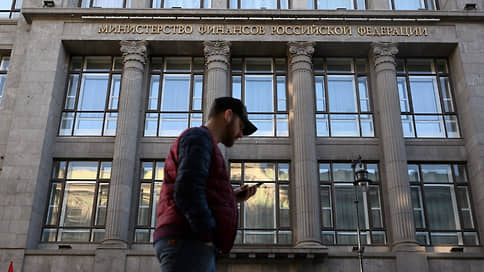Investors expect a further increase in OFZ yields
[ad_1]

The new OFZ issue, placed on October 18, became the most expensive since 2015, although small in volume. Investor demand, despite the high profitability, turned out to be quite weak. Market participants expect continued growth of rates on the debt market against the backdrop of accelerating inflation. However, analysts do not see any risks of non-fulfillment of the borrowing plan: for example, the Ministry of Finance has in reserve OFZs with a floating rate, which are popular with large banks.
The placement of government bonds on October 18 cost the Ministry of Finance dearly. For the OFZ issue with maturity in May 2041, the issuer set a weighted average yield of 12.34% per annum. The result exceeded the bid at the previous auction for these securities on September 20 by 0.51 percentage points. OFZs maturing in May 2038 were placed at a weighted average yield of 12.3% per annum, which is almost 1 percentage point higher than at the end of August.
For the first time, the 12% per annum barrier was crossed on the primary market last week, but then the Ministry of Finance placed nine-year OFZs, one of the shortest this year. Longer securities with maturities over ten years have not been placed at such rates since 2015. Eight years ago, the maximum maturity of placed securities was 11 years, and the yield reached almost 15% per annum.
According to Alexander Ermak, chief debt market analyst at BC Region, the yield premium at the auction of 18-year securities amounted to 7–9 bp. p. to the secondary market, for a shorter issue – 41 bp. p. “Pricing on the secondary market for the issue of 14-year securities is ineffective due to the limited volume in circulation, however, the premium to the “fair market level” amounted to 8–10 bp. etc.,” clarified Mr. Ermak.
The Ministry of Finance compensated for the high placement rate with a low volume of attraction – a total of 11.3 billion rubles. This is more than five times less than last week.
The ministry attracted less during weekly auctions only at the beginning of the year (about 7 billion rubles). Investors, however, did not seek to purchase long-term securities even at high rates – the total demand at auctions amounted to only 25.6 billion rubles.
The increase in rates on initial placements occurs against the backdrop of a straightening of the OFZ yield curve, as a result of which the spread between the yields of short and long securities decreased to 0.05 percentage points, whereas a month earlier it exceeded this value. According to General Invest portfolio manager Dimitry Rezepov, the narrowing of the spread is due to the sale of long bonds with a small redemption of short-term securities: “The uncertainty of the Central Bank’s further steps is forcing investors to reduce exposure in long bonds in favor of money market instruments and securities with a floating coupon.”
Market participants expect a further increase in the key rate before the end of the year. Moreover, in September the inflation rate accelerated to 14.6% after 9.4% in August and 12.3% in September.
Sovcombank chief analyst Mikhail Vasiliev admits that at the next meeting on October 27, the Bank of Russia will raise the key rate by another 100-200 bp. p., up to 14–15%.
When making decisions on the rate, the Central Bank is guided by the current rate of monthly inflation with seasonal adjustment in annual terms (SAAR). “If the Bank of Russia wants to raise the rate above the current inflation rate, then it must be increased to at least 15%,” notes Mr. Vasiliev.
This will also lead to an increase in rates on the debt market. According to Mikhail Vasiliev, the nearest benchmark for short-term OFZ issues may be the current level of the key rate of 13% (with the prospect of growth to 14-15%), the yield of long-term OFZs may rise to 12.5% per annum (with the prospect of growth to 13-14 % per annum).
Such market conditions will complicate government borrowing. However, given the budget surplus, this situation does not pose any risks. According to Alexander Ermak, the required volume of placement during the remaining ten auction days averages 38.6 billion rubles. The Ministry of Finance can attract them by resorting to a more active placement of OFZs with a floating coupon, which are in high demand from investors, primarily banks.
[ad_2]
Source link





